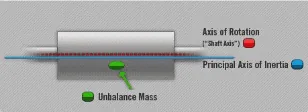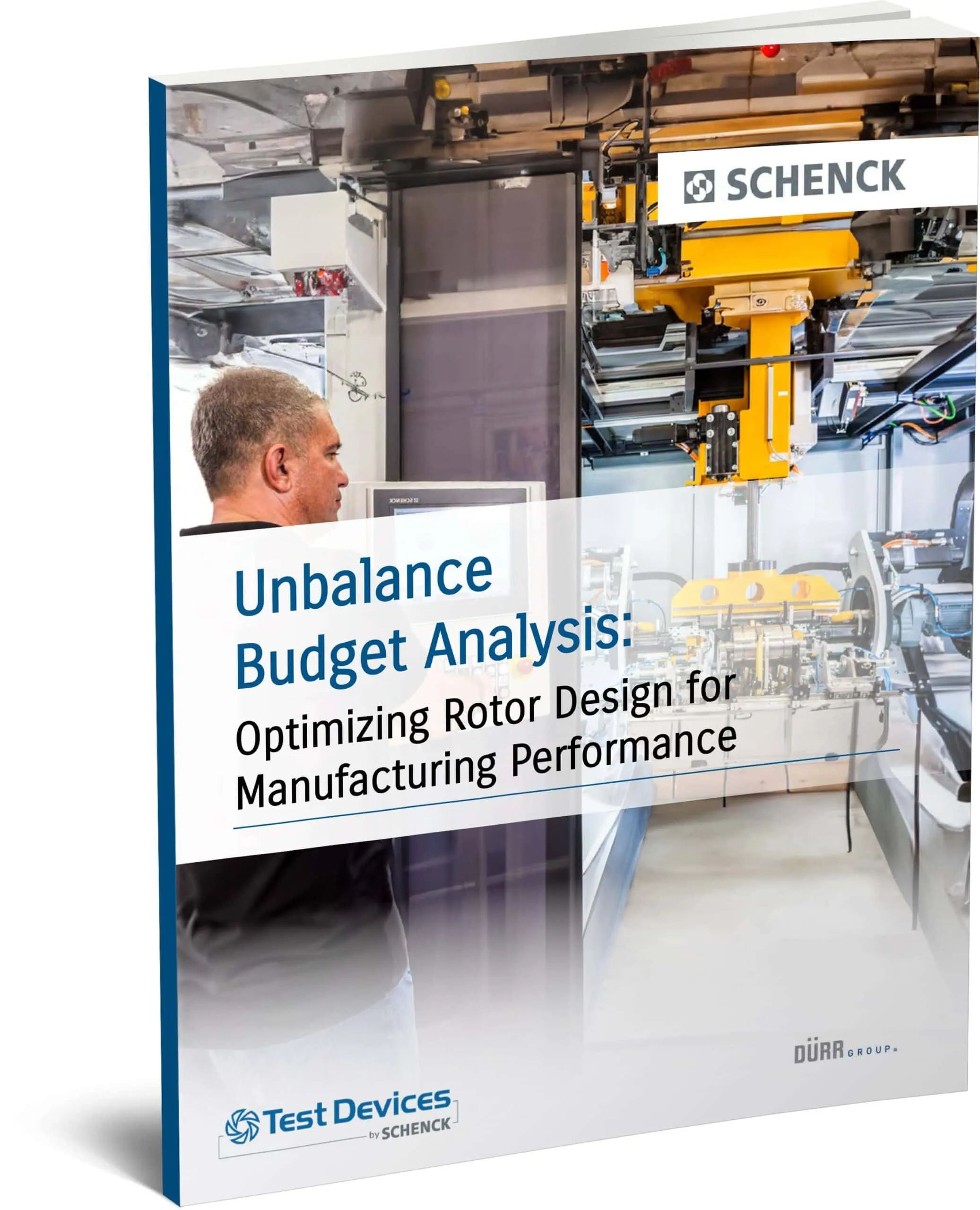Benefits of Unbalance Budget Analysis for Rotors
While rotor balancing can sometimes be treated as an afterthought within the aerospace industry, rotor unbalance has a significant impact on overall machine performance, durability, and quality. When designing any rotating part, engineers must pay careful attention to the unbalance correction strategy. To optimize rotor design for improved performance, Andreas Buschbeck et al. from SCHENCK developed the Unbalance Budget Analysis method.
The unbalance budget summarizes all reasons for the unbalance based on the given tolerance limits in the part drawings. Here, we’ll go over the key characteristics of rotor unbalance, as well as Buschbeck’s thoughts on why performing unbalance budget analysis is so crucial and how it’s accomplished.
Characteristics of Rotor Unbalance
Rotor unbalance can fall into three primary categories:
- Intrinsic unbalance: A type of unbalance that results from variations in manufacturing tolerances or other factors relating to manufacturing technique.
- Unbalance due to runout: An unbalance that comes from geometric variations in the shaft surfaces, particularly the mounting surfaces.
- Unbalance due to fit clearance: This type of unbalance is due to fit clearance and is related to geometric variations in the assembly. For example, assembly misalignment can occur due to variations in the mating interface.
Within all of these categories, there are many physical considerations that can result in unbalance. Controlling the level of unbalance in a rotating part requires a thorough definition of its reference features to which all shape and form tolerances can be compared.
For instance, misalignment is a common cause of rotor unbalance. To define the acceptable level of misalignment a rotor can have, engineers must control the combined effect of geometric tolerances, including:
- Concentricity
- Coaxiality
- Roundness
- Lateral and radial runouts
Reasons to Perform Unbalance Budget Analysis
Rotor design requires an estimation of future unbalance correction which has to be applied for upcoming unbalances caused by geometric features and tolerance limits. This estimation helps to determine additional rotor features that allow the unbalance correction.
Difficulties often arise when using design software that fails to account for unbalance or does not have the ability to achieve a balanced state for each rotor design. To overcome this challenge, a quantitative analysis method can be used to review the sensitivity of the abovementioned factors and correlate them to the rotor unbalance level. Based on the results of this analysis, it’s possible to understand which rotor features have the biggest impact on unbalance and correct them.
A well-engineered rotor balancing strategy lowers costs and improves the manufacturing process by streamlining workflow. Additionally, it helps to determine which parts must be precision-machined to avoid unbalance and which can adhere to more rough geometric tolerance limits.
Performing Unbalance Budget Analysis
Several factors go into performing an unbalance budget analysis. First, an estimation and calculation of both initial and assembly unbalance must be performed for all relevant single components. This involves:
- Estimating based on past experience with similar rotors
- Determining the empirical value of manufacturing
- Analyzing the drawing tolerances
Many factors influence unbalance in single parts and assemblies, and these must also be considered. Engineers will review:
- Manufacturing tolerances
- Mass tolerances
- Fitting tolerances and eccentricity respectively failure of concentricity
- Coaxiality
- Curvature and misalignment respectively axial run-out
- Product of inertia of the single components around their center of gravity
- Assembly of sub-components
The final step is to consider any other potential cause of unbalance and then make a statistical summation of all of these factors and their significance. The summation should discuss both static unbalance and moment unbalance, as well as effects in the unbalance planes.
Unbalance Budget Analysis: Required Data
In the final analysis, there are many types of information that should be presented. This includes the measurement results (if available), all relevant part masses and densities, a description of the preliminary unbalance correction, and the distance between the bearings. In addition, 2D detail drawings with all geometric tolerances of all relevant rotating parts should be included. Finally, the analysis should feature 3D models of all relevant rotating parts as an assembly in either STEP or Parasolid (*.x_t) format.
For a more in-depth look at performing an unbalance budget analysis, download our eBook, “Unbalance Budget Analysis: Optimizing Rotor Design for Manufacturing Performance.”
Contact Test Devices for Balancing Services
Performing a rotor unbalance budget analysis not only results in better-performing parts but can also reduce manufacturing costs. Gain a more in-depth understanding of this process by reaching out to our team with any questions. To get started improving the quality of your rotating parts, request a quote today.



